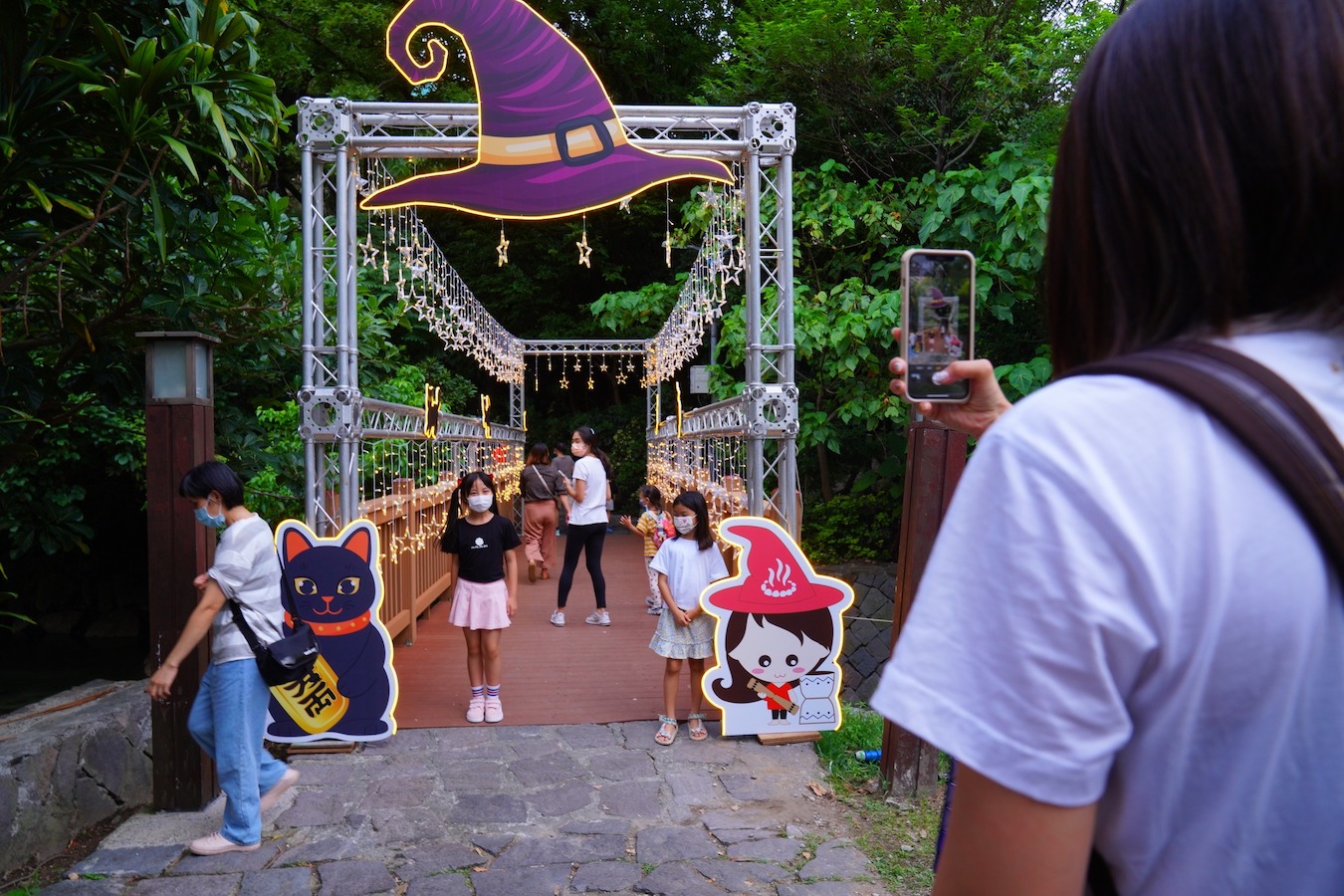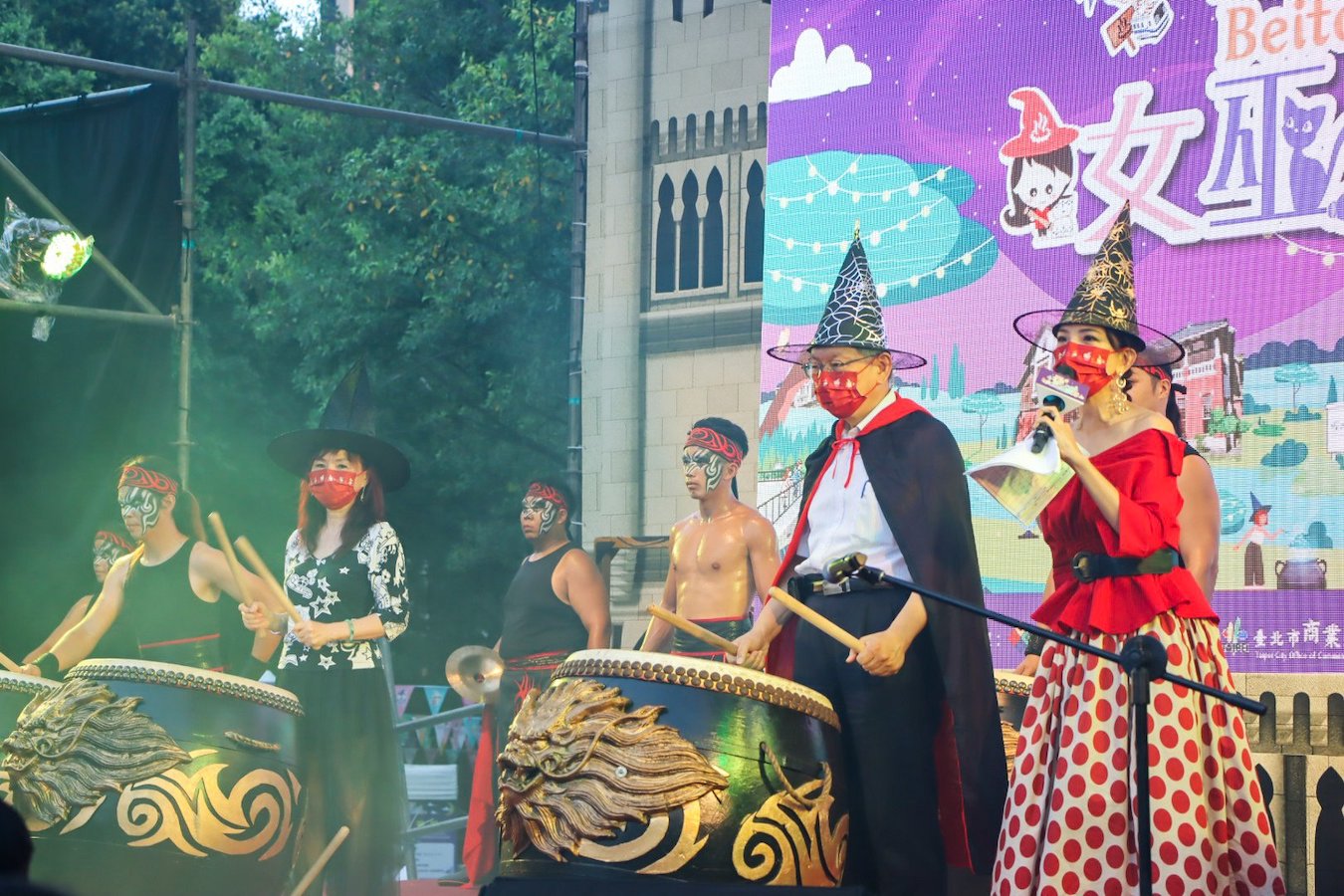by Brian Hioe
語言:
English
Photo Credit: 新北投溫泉 Xinbeitou Hot Springs/Facebook
A CULTURAL EVENT in Beitou has been criticized regarding Indigenous representation. Namely, the event, the “Beitou Witch Magic Festival” (北投女巫魔法節), draws on the history of female Indigenous mediums in Beitou. Such mediums are known as Pataauw in Ketagalan culture, the Ketagalan being the original inhabitants of present-day Taipei, and sometimes they are referred to in present-day discourse as “witches”. The term “Beitou” is, in fact, etymologically related to the Ketagalan word for Pataauw.
However, the depiction of “witches” in the “Beitou Witch Magic Festival,” framed them along the lines of western witches, with imagery drawn from Halloween more than anything else, despite referring directly to Pataauw. Apart from that the logo of the event and costumes worn by performers resembles those of western witches, installations set up at the event resembled western castles, and there were pumpkin and spider webs in decorations. A lengthy commentary on the event was published in Up Media by Tan Kim-man, the documentary film director of “Under the Sky of the Ketagalan.”
Ad for the event
Although there were also male mediums in Ketagalan culture, there has been greater focus on the history of the Pataauw in past years following fictional works such as Pataauw: The Witches of Beitou by Shih-Gye Chien. The work is a contemporary Taiwanese comic that depicts Pataauw in modern times as superheroes fighting against evil forces linked to developmentalism and the KMT, even as they have civilian alter egos and go about their lives as normal members of society. The comic can be situated in line with other Taiwanese fictional works that emphasize Taiwan identity by drawing from history or traditional religion. That being said, Chien did not consult with descendants of the Ketagalan regarding his fictional depiction of Ketagalan culture.
In his op-ed, Tan commented that if there is use of the history of Indigenous Pataauw for tourism purposes, this should be carried out respectfully, with research into the original cultural practices of the Ketagalan. In comments on Facebook, Tan suggested that the organizer of the event had a fundamentally condescending view of city residents, not expecting them to know the difference between Pataauw and western witches. Tan also commented on the irony of the history of women persecuted as witches in medieval Europe becoming fodder for domestic tourism under conditions of globalization.
Taipei mayor Ko Wen-je was present at the opening ceremonies for the event. Otherwise, one notes that the event also offered “Beitou Witch NFTs”.
Taipei mayor Ko Wen-je making an appearance at the event. Photo credit: 新北投溫泉 Xinbeitou Hot Springs/Facebook
More generally, backlash against the “Beitou Witch Magic Festival” points to the broader issue of Han appropriation of Indigenous customs for tourism purposes. Although international tourism has not been possible for some time due to the effects of the COVID-19 pandemic and remaining border restrictions in Taiwan, this is sometimes used for the purposes of attracting visitors from abroad. But, as with the “Beitou Witch Magic Festival”, at other points, the appropriation and commodification of Indigenous culture is for the sake of domestic tourism.
This takes place even as the government ostensibly seeks to promote Taiwan’s Indigenous culture. With the Tsai administration in power, as an administration of the pan-Green camp, touting Taiwan’s Indigenous history serves as a way of differentiating Taiwan from China.
Nevertheless, this has also led to the misrepresentation of Indigenous culture on the national stage. A prominent case in point would be the “Taiwan’s Light” performance that preceded Tsai Ing-wen’s inauguration. Apart from its rather strange depiction of the long history of inter-ethnic conflict in Taiwan, the performance referred to the “primitive and uncultivated customs of the Indigenous” that required civilizing by western missionaries. Likewise, it began its narrative of Taiwanese history starting with western colonial powers “discovering” Taiwan, never mind that it had been inhabited by Indigenous for thousands of years prior, and for the most part, Indigenous are depicted along stereotyped lines as a happy singing and dancing peoples.
Poster for the event. Photo credit: 新北投溫泉 Xinbeitou Hot Springs/Facebook
Indeed, such a depiction of Indigenous history took place despite the Tsai administration apologizing to Indigenous on behalf of the ROC state. To this extent, it is worth drawing out the point of how western-centric the Tsai administration’s depiction of Indigenous history was. But if this is the depiction of Indigenous history and culture which occurs ahead of a presidential inauguration, it perhaps should not surprise that there the depiction of Pataauw in Beitou would be along the lines of western witches.
Yet this shows the long path to be walked for Indigenous representation in Taiwan. That the “Beitou Witch Magic Festival” took place in such a manner was despite that Indigenous groups and organizations are, in fact, quite active in Beitou, yet they apparently do not seem to have been consulted with regards to the depiction of the historical Ketagalan.





